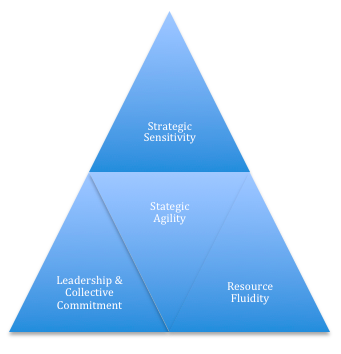TecHeaRt 2018: Into the heart of strategic and agile HR

When you are amidst leaders from organizations that vary in terms of sector, age, business model and structure, discussing the space of HR, you tend to realize a few things. Firstly, with regard to the lay of the land, despite organization-specific differences, there is collective agreement on the larger aspects, trends and dimensions, which makes one ponder over the ubiquitous changes sweeping over the general HR landscape. Secondly, you realize that in spite of facing similar generic challenges, their approach to resolving it, while again adhering to a shared perspective, is uniquely tailored for their specific organizations. And finally, it dawns on you that, when in conversation about the future of HR and of work, they are not merely foretelling the changes to come but rather, being leaders, they have the power to b instrumental in manifesting these changes.
TecHeaRt, 2018 by NHRD was an event that allowed an intermingling of ideas from important voices in the HR world, who are engaged hands-on in the evolution of the HR landscape. As they discussed the many faces and phases of technology in the human resources arena, themes emerged that would help any organization in charting out the way forward. Agility seemed to be a constant theme and the key that unlocked many doors.
The need for speed and more
In a session artfully moderated by CEO Coach & OD Consultant, R.R. Nair, Krishnakumar Natarajan, Executive Chairman, Mindtree and Prof. Yves Doz, Emeritus Professor of Technological Innovation, INSEAD set the stage for the protagonist in the unfolding drama around HR technology – agility.
“In the non-stop VUCA that we are experiencing with no sign on slowing down, we talk of digitization and the state of constant innovation where, for companies to succeed, leaders need to respond to changes in ways that are fast and flexible. The next gen of leaders needs to be agile”, observed R.R. Nair.
Natarajan talks of the fact that in any organization, growth is a mindset. Keeping that in mind, leaders need to adopt agility to be able to grow irrespective of the market. He said that though in the IT industry, the growth rate has fallen from around 60 per cent in 2007 to around the 20s now, the prospects are still huge and needs to be leveraged by creating an opportunity environment and being focused on relevant aspects.
Professor Doz stresses on the need to change while learning from the past but becoming nostalgic enough to be drawn back to past processes. The idea is to strengthen the organization’s strategic position in alignment with future needs and that is what the value of agility needs to focus on.
Building strategic agility
In order for organizations to create a culture that nurtures strategic agility, the three components that interact to form the basic structure of it need to be understood.

Thus, in order to break the shackle and cycle of strategic rigidity (which is often based on the idea of what has proven to work in the past and disregarding the dynamism of the operative environment), these three elements needs to be kept in mind and allowed to grow.
Enablers for the future
Keeping the environment in mind, Manu Saale, MD & CEO Mercedes Benz R&D India, Paul Dupuis, CEO, Randstad India, Pradeep Parmeswaran, CEO Uber, South Asia, and Ravi Panchanadan, MD & CEO, Manipal Global Education Services talked of how leadership needs to set the tone along with the expectations for the effective use of technology in HR.
Mutual understanding, having a shared agenda and processes that are fair and transparent aid in helping the organization collaborate as a unified unit. That said, leadership teams do need to pay more attention to ambition gaps and the diversity of input, as stated by Professor Doz. The current state of HR demands the shift towards modular and multidimensional structures, more flexible budgeting and a restructuring of responsibilities across teams to actualize the potential of the talent pool.
The event had an interesting mix of new age startups and legacy companies who to share best practices that work for them. For leaders hailing from a diverse pool of organizations, the idea of managing technology in HR, the commonality seemed to lie in the pressing need to evolve and to make the most of tools and processes so abundantly available.














